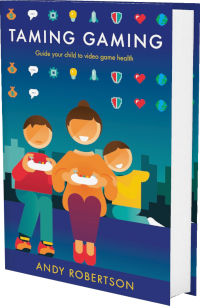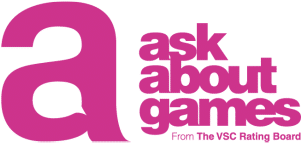 Android
Android iOS
iOS Mac
Mac Switch
Switch Wii
Wii Wii U
Wii U PC
PC PS4
PS4 PS5
PS5 Xbox One
Xbox One Xbox X|S
Xbox X|SWe've documented 28 accessibility features for A Juggler's Tale, including Fully Voiced (Or No Speech), Large Subtitles, Low Pressure, No Button Combos and No Holds. Its accessibility is strongest in Controls and Getting Started but it also has features in Reading, Navigation, Audio and Visual to reduce unintended barriers.
This report is created with input from accessibility experts and the player community to help people find games that have the accessibility features they require. Once you have found potential games on the database, there are excellent specialist accessibility sites that offer in-depth reviews to guide your purchasing decisions.
External examiner, Dominik Schön, first checked A Juggler's Tale accessibility a year ago. It was re-examined by Andy Robertson and updated a year ago.
 Accessibility Notes
Accessibility Notes
There is an interaction colour in the game that highlights every object that the player can interact with. The interaction colour can be customized for colour-blind people.
 Game Details
Game Details
Release Date: 27/08/2020, updated in 2021
Out Now: PC, PS4, Switch and Xbox One
Players: 1
Genres: Adventure, Traversal (Action, Platform and Puzzle)
Accessibility: 28 features
Components: 2D Side-On
Developer: Kaleidos Cube (@KaleidosCube)
Costs: Purchase cost
 Controls
Controls
We've documented 12 accessibility features for Controls in A Juggler's Tale which deal with how you control the game, different options for alternative inputs and whether you can remap these settings to suit your needs.
Gamepad
Can play with the following:
Multiple Buttons & Two Sticks: Can play with multiple buttons and two sticks.
Mouse And Keyboard
Can play with the following:
Keyboard Alone: Can play with just the keyboard.
Remap Controls
Can customise the controls for the game as follows:
Select Preset Controller Mappings: You can select preset button layouts from options provided by the developer.
Remap Buttons: Can re-map all buttons so that you can use alternatives that better suit your play.
Swap Sticks: Can swap the sticks over so that you can use the opposite sticks to control the game.
Remap Sticks: Can remap the stick controls to controller buttons for easier access of direction controls.
Remap Mouse and Keyboard: Can remap mouse and keyboard key bindings, on systems that support these controls.
Invert X/Y Axis: Can invert the direction required to control looking and aiming. This enables you to match your instinctive orientation when looking.
Button Combinations
Specific button operation required to play
Holding Down Buttons Optional: Holding down buttons for prolonged periods (a second or more) is not required or can be switched to toggling the action on and off. This is in addition to the movement stick/button which is not considered a hold for this purpose.
No Simultaneous Buttons: Only one button or key required at a time, in addition to direction stick(s).
Controller Vibration
Vibration Optional: Controller vibration not used in the game or you can disable it.
Informative Vibration: Controller vibration indicates events or interactions in the game, echoing visual and audio cues. This can provide additional information about progress, approaching enemies or hitting a target.
 Difficulty
Difficulty
We haven’t documented any accessibility features for Difficulty in A Juggler's Tale which deal with how you can adjust the challenge of play, and whether this is locked once chosen or can be adjusted as you play. The following games are similar to A Juggler's Tale, and offer accessibility features for Difficulty:
- Cuphead (2 Difficulty Features)
- Fossil Echo (1 Difficulty Feature)
- Ori and the Will of the Wisps (1 Difficulty Feature)
 Getting Started
Getting Started
We've documented 6 accessibility features for Getting Started in A Juggler's Tale which deal with what support is offered to get started with the game. This includes customising the experience when you first open the game via any onboarding processes it provides as well as tutorials and other assistance when you first start playing.
Assistance Getting Starting
These features aid your play of the game in terms of cognitive load on learning controls, dealing with pressure and coping with the environment and challenges.
Tutorials: There are helpful tutorials and instructions on how to play. Information is provided in a timely manner, with appropriate level of detail.
Practice Area: You can practice freely without opponents or time pressures. This can be a specific practice option, or the ability to play levels with the easiest opponents to improve understanding and skill.
View Control Mapping: You can view a map of controls during play. This clearly displays the mappings of actions to buttons/keys/mouse/keyboard without having to leave the game. This includes games that always display buttons to press during play.
Low Pressure: Game tasks aren't time-limited or there's a low-pressure mode. This avoids the pressure of being put on the clock for overarching missions, or failing tasks because you didn't reach a destination in time.
No Jump Scares: No sudden loud noises or popping-up scary visuals that unexpectedly appear without warning, or the option to disable them.
Assistance For Progressing
These features aid your progress through the game offering different ways of maintaining your progression.
Bank Progress With Frequent Checkpoints: If you fail you can retry that level or aspect of the game without losing a lot of progress (less than 5 minutes). This is often provided via Frequent Checkpoints combined with restarting without losing time, equipment or score.
 Reading
Reading
We've documented 5 accessibility features for Reading in A Juggler's Tale which deal with how much reading or listening comprehension is required, how well the game provides visual and audible access to the text and whether subtitles and captions are a good fit for purpose.
Reading Level
How much reading is required to play the game's main path or story and how complex the language is. The presence of voiced characters doesn't reduce this requirement, as it's recorded as a separate datapoint.
Simple Minimal Reading: Minimal reading is required. The quantity and complexity of reading are at a level that a primary/elementary student (9-year-old) could understand.
Subtitles
Large Clear Subtitles: Subtitles are large, clear and of good contrast. They are at least 1/20 (46 pixels on 1080 screen) the height of a landscape screen and at least 1/40 height on portrait screens, or can be adjusted to be. We base this on the full line-height, including the space above and below the letters. Considered separately from the general text of the game, the subtitles are large, clear and of good contrast.
All Speech Subtitled (Or No Speech In Game): All spoken content has subtitles, or there is no speech in the game. This means there is no requirement to hear spoken dialogue or narrative to play the game.
Captions
Speaker Indicator: Textual captions indicate who is speaking (or there is only ever one person speaking). This can also be indicated visually in the game with character icons or placing text in speech bubbles next to the person speaking.
Voice Acted
All Dialogue is Voice Acted (Or No Speech In Game): All of the game dialogue and narrative can be voiced, or there is no speech in the game. This means there is no requirement to read the dialogue and narrative text to play the game.
 Navigation
Navigation
We've documented 2 accessibility features for Navigation in A Juggler's Tale which deal with how the game provides guidance and assistance to navigate its worlds. These are only for games that have traversal and exploration in 2D and 3D spaces.
Clarity
Visual Directional Cues: Additional in-game visual cues that signpost where to go next and how close you are to arriving. This can be with camera movement to focus on your destination or important items. It can use light, breadcrumb trails, in-world pointers to identify your mission's target location.
Menu Navigation
Digital Menu Navigation: Menu choices with Gamepad can be made without using an analogue stick to guide a cursor to a selection. For example, using D-Pad, buttons or the Stick to change menu selection in a single action.
Similar Games With More Accessibility Features for Navigation
If you want to play A Juggler's Tale, but it doesn't offer the Navigation accessibility features you require, this similar game extends the Navigation accessibility:
- Ori and the Will of the Wisps (3 Navigation Features)
 Visual
Visual
We've documented 1 accessibility feature for Visual in A Juggler's Tale which deals with how you can adjust the visuals to suit your needs, and offer additional information if you can't hear the game.
Colour Options
Colour Adjustments: Adjust colours of characters or game elements for greater visibility. Includes the ability to select which type of colour blind mode you require.
Similar Games With More Accessibility Features for Visual
If you want to play A Juggler's Tale, but it doesn't offer the Visual accessibility features you require, these similar games extend the Visual accessibility:
- Getting Over It with Bennett Foddy (4 Visual Features)
- Cuphead (3 Visual Features)
- Ori and the Will of the Wisps (3 Visual Features)
- Dodo Peak (2 Visual Features)
 Audio
Audio
We've documented 2 accessibility features for Audio in A Juggler's Tale which deal with how you can adjust the audio of the game and whether audio cues compensate for aspects of the game that are hard to see.
Adjustable Audio
Balance Audio Levels: Set music and game sound effects separately. This enables you to select your preference as well as ensure critical game sounds aren't obscured by other audio.
Play Without Hearing
Play Without Hearing: No audio cues are necessary to play the game well.
System Accessibility Settings
In addition to the accessibility features provided in the game, you can also use system-wide accessibility settings:
Nintendo Switch
Nintendo Switch has some built-in features, including a lockable zoom, that can be used on all games.
PC
Windows has extensive accessibility features. Some, like colour correction, work with games. Lots of accessibility software can be used with PC games, from voice recognition to input device emulators.
PlayStation 4
PlayStation 4 has a range of accessibility settings. Some are system only, some work in games (invert colours and button mapping).
Xbox One
Xbox One has a system features, the excellent co-pilot share controls mode and adaptive controller support for all games.
Read more about system accessibility settings.
Accessibility Report supported by VSC Rating Board, PlayabilityInitiative and accessibility contributors Andy Robertson












